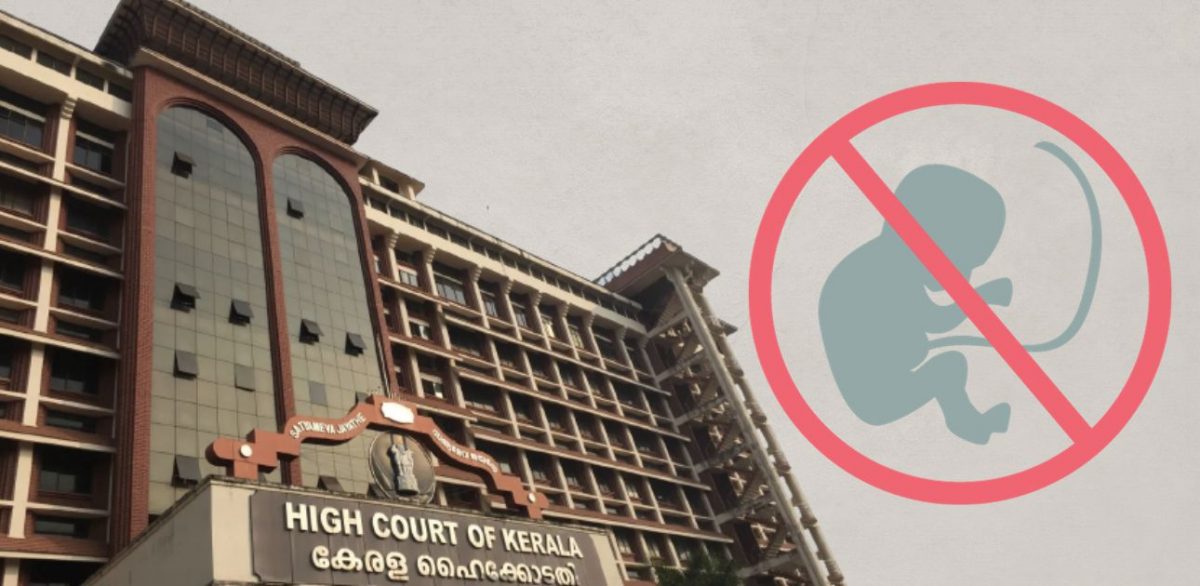What does the Medical Termination of Pregnancy Act of 1971 say?
—
LAST month, the Kerala High Court rejected the request of a 12-year-old girl to terminate her pregnancy on account of an incestual relationship with her minor brother.
Justice Devan Ramachandran observed that the foetus had already reached 34 weeks of gestation and was fully developed, preparing for its life outside the womb.
“Termination of pregnancy at this point is not tenable, if not impossible; and obviously, therefore, the child will have to be allowed to be born, either through a Caesarean section, or a normal delivery.
“This, of course, is a matter of choice for the experts and cannot be fully left to the petitioners, particularly, taking note of the rather young age of the victim-mother,” Justice Ramachandran held.
Initially, the medical board opined for the termination of the pregnancy, considering the tender age and psychological trauma caused to the girl.
About the foetus, the medical board opined that there was an increased risk of morbidity and mortality due to prematurity. It also opined that the mother was also at risk of complications, both usual and unforeseen, as inherent in the procedure of termination.
“After direction from the court, mode of termination may be discussed with the parents and decided,” the first medical board had stated.
However, Justice Ramachandran found the medical opinion unclear and amorphous. He had interaction with the members of the medical board on December 20.
In the Order passed on that day, Justice Ramachandran noted that the doctors were unanimous in their opinion that since the foetus had attained gestation of over 34 weeks, it would be better to wait until 37 weeks to execute a Caesarean section and take the baby out.
They had added that the health of the mother (victim-child) was also good enough to carry the pregnancy for the said term, and they were affirmative that the prognosis is that a healthy child would be born.
Justice Ramachandran directed the victim to appear before the special medical board again on December 21.
The review medical board recommended continuing the pregnancy and delivery by 36 weeks, provided no other obstetrics emergency developed before that. It also recommended Caesarean section rather than vaginal delivery because that would have a smaller psychological impact on the girl.
Justice Ramachandran interacted with the members of the review board yet again, who, according to him, remained firm in their opinion that if the child is to be delivered now, it may have a serious impact on its health and prognosis, because the gestation is already 34-weeks-old.
“The doctors were unanimous in their opinion that if the gestation is to reach 36 weeks, a safe Caesarean delivery could be considered because normal delivery may be untenable on account of the young age of the mother.
“They also informed this court that, in their opinion, another two weeks of gestation of the foetus would not affect the physiological well-being of the mother,” Justice Ramachandran noted in his order.
The state government argued that it was not a case where the foetus had any severe abnormality; nor was there any danger to the mother’s health or psychological condition, if the pregnancy was to be continued for another two weeks, leading to the delivery of the child.
The lawyer for the victim’s parents submitted that if there was no other option, then the victim was willing to carry the foetus for another two weeks, leading to a Caesarean section delivery.
He, however, prayed that if the doctors were of the view, at that time, that a normal delivery was possible, that option may also be left open to his clients.
He also submitted that since the victim-mother was such a young girl, she would require the comfort and support of her parents; and therefore, prayed that she be allowed to continue to live with them until she delivers the baby and thereafter.
Observing that the foetus had already reached 34 weeks of gestation and was fully developed, Justice Ramachandran eventually rejected the petition and directed that after attaining the gestation period of 36 weeks, the petitioners-parents would be at liberty to approach the superintendent of the Government Medical College, Manjeri, who will, thereupon, subject the victim to an evaluation by the experts; and then take a decision as to the nature of the delivery to be performed.
Justice Ramachandran also directed the parents of the victim to ensure their minor son against whom the allegations were made is not allowed anywhere near his sister or to have access to her in any manner whatsoever.
Section 3(2)(a) of the Medical Termination of Pregnancy (MTP) Act, 1971 permits the termination of pregnancy where the length of pregnancy does not exceed twenty weeks.
Clause (b) of this subsection permits termination where the length of pregnancy exceeds twenty weeks but does not exceed twenty-four weeks for such categories of women “as may be prescribed by Rules made under this Act”.
However, an opinion must be formed by not less than two registered medical practitioners that inter alia “the continuance of the pregnancy would involve a risk to the life of the pregnant woman or of grave injury to her physical or mental health”.
The Rules framed under the MTP Act, 1971 for the purpose of “categories of women” as mentioned in Section 3(2)(b) include categories of women such as divorcees, widows, minors, disabled and mentally ill women and survivors of sexual assault or rape.
Initially, the Rules excluded unmarried women from its purview. However, the Supreme Court in X versus Principal Secretary Health, Delhi, interpreted Rule 3B to include ‘unmarried women’ as well.
Click here to read the order.


